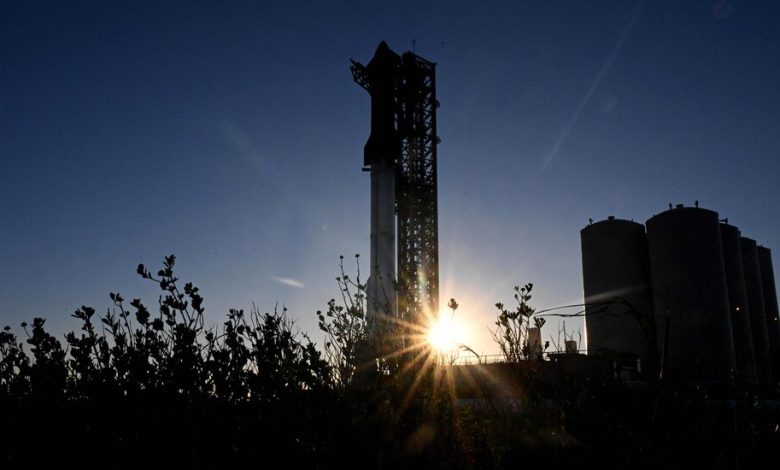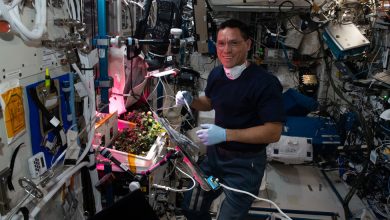SpaceX Is Ready for the 2nd Launch of Its Starship Moon and Mars Rocket

SpaceX is preparing for the second test flight of Starship, the giant rocket that is being built to carry NASA’s astronauts to the surface of the moon and Elon Musk’s ambitions to Mars. The Federal Aviation Administration granted regulatory approval for the launch on Wednesday, setting up an attempt on Friday morning.
Here’s what you need to know about the launch.
When is the launch, and how can I watch it?
Starship launches from Boca Chica, Texas, a site on the coast of the Gulf of Mexico near the city of Brownsville that SpaceX has nicknamed Starbase.
The flight could lift off as early as 8 a.m. Eastern time on Friday. SpaceX will stream the launch live on X, the social network formerly known as Twitter that is also owned by Mr. Musk.
There is a two-hour window during which SpaceX could launch. Test missions frequently lift off later in a launch window as flight managers work to assure that systems are functioning as designed.
If the flight is fully successful, Starship will complete a partial trip around the Earth before belly-flopping into the Pacific Ocean off the island of Kauai.
What is Starship?
For NASA, Starship is a future moon lander for astronauts under the Artemis missions. But for, Mr. Musk, the founder and chief executive of SpaceX, the vehicle is central to his vision of carrying settlers to the red planet. That means Starship has to be big.
Stacked on top of what SpaceX calls a Super Heavy booster, the Starship rocket system will be, by pretty much every measure, the biggest and most powerful ever.
It is the tallest rocket ever built: 394 feet tall, or nearly 90 feet taller than the Statue of Liberty including the pedestal.
It is designed to be entirely reusable. The Super Heavy booster is to land much like those for SpaceX’s smaller Falcon 9 rockets, and Starship will be able to return from space belly-flopping through the atmosphere like a sky diver before pivoting to a vertical position for landing.
What went wrong during the first Starship flight?
First there was the massive brown cloud that spread outward from beneath the rocket as its engines fired up. It contained dirt, rocks and even boulder-size concrete chunks that the force of the rocket thrust excavated from beneath the launch pedestal.
And then as Starship rose into the air, it tipped to the side. Three of the booster’s 33 engines had failed to start, and the unbalanced thrust caused the leaning ascent.
Starship cleared the launch tower, and then for much of the next minute, the flight seemed to be going well. But there were signs that more was going wrong. Cameras pointed at the bottom of Starship seemed to show that six of the engines had failed. The booster was to separate from the upper stage at 2 minutes, 52 seconds into flight, but it never did. Instead, Starship started tumbling slowly, and a minute later, explosives meant to destroy a rocket that has gone off course finally exploded.
A week later, Mr. Musk offered preliminary answers about what had gone wrong during a question-and-answer session on Twitter, now named X.
“Some good news items here,” he said. “The vehicle’s structural margins appear to be better than we expected,” pointing to the moments of the flight. “The vehicle is actually doing somersaults towards the end and still staying intact,” he said.
What has SpaceX changed for this Starship flight?
At first glance the Starship rocket on the launchpad for Friday looks like the same behemoth vehicle that launched in April. It is not.
The biggest change is something called “hot firing.” Starship’s upper-stage engines will ignite while the booster is still attached and some of the booster engines are still firing, potentially improving the rocket’s performance.
SpaceX also made changes to the rocket design to prevent fuel leaks and fires, and it made improvements to the flight termination system that took much too long to destroy the Starship.
For the launchpad, to prevent the rocket engines from destroying the concrete below and sending up another cloud of debris and dust, SpaceX has added a structure that consists of two plates with holes on the top plate. “Basically, a massive, super strong steel shower head pointing up,” Mr. Musk said.
Hundreds of thousands of gallons of water sprayed upward from this system will act as a cushion absorbing the heat and force of the rocket engines, protecting the steel and concrete.





